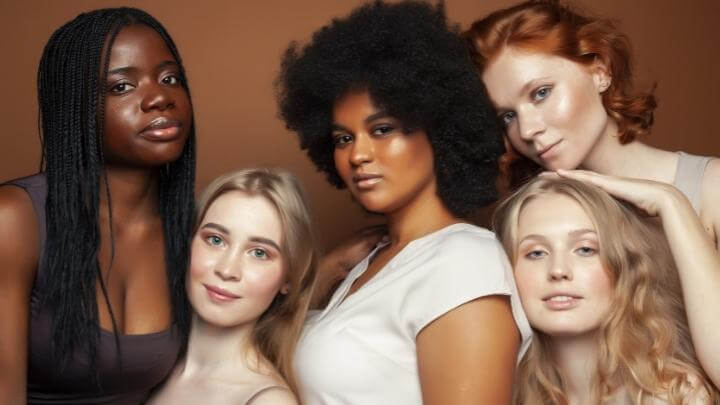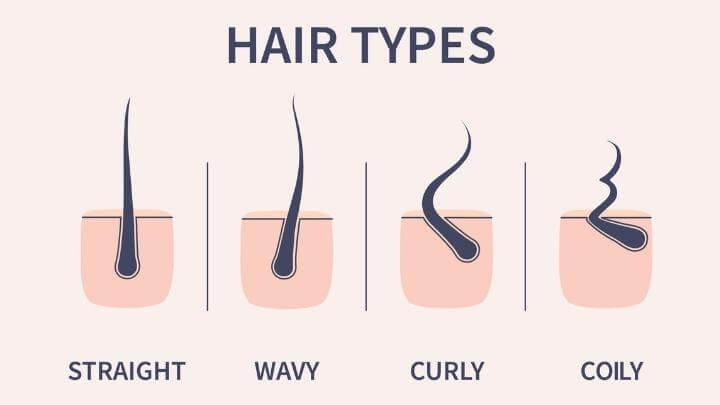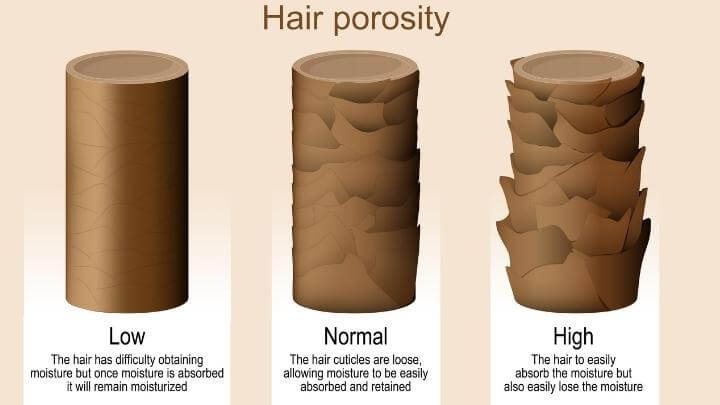Understanding hair textures and types and how to find yours

First, let’s make one thing clear – your hair is as unique and one of a kind as you!
Now that that’s out of the way, what’s your hair type? For some lucky few, it’s obvious, but for others, you could have a few different factors happening concurrently.
Whether long, short, curly, or straight, your hair deserves the deluxe treatment. We’re doing the most this year for our health and beauty, which means evaluating each of your selfcare needs. Get to know your hair’s follicle shape, porosity, density, and specific moisture needs because healthy selfcare includes nourishing your locks, from roots to ends.
If that sounds like a lot, don’t sweat – we’re here to break it down! Below is everything you need to know about determining your hair type and what that means for your daily haircare routine.
For better or worse, your hair type is primarily determined by your genetics. The main aspect of any hair type is its shape, followed by texture. The shape of your follicle determines whether your hair is one of four main types of hair: straight, wavy, curly, or coily. The more oval or asymmetrical your follicle is, the curlier your hair will be.
The texture is determined by diameter, which basically means the thickness of each strand of hair, i.e., very fine hair or very coarse hair. This can even differ from root to end on a single strand. Some strands are thicker at the root and weaken or are narrow toward the end.
This is an important detail to differentiate for proper care. Baby fine coily hair has a significantly different need for moisture than fine, straight hair, which may require volume and oil control.

This hair type stubbornly remains straight and will struggle to hold a curl regardless of the styling tool. It typically lies flat at the root, is soft and silky, and fine or coarse. Often, women with straight, fine hair may notice this hair type will get oily at the root but can be dry on the ends.
Wavy hair has the best of both worlds and is neither completely straight nor too curly. It falls somewhere, enviously, in-between. Wavy hair is often noted by a slight curl towards the end and usually has a medium to thicker texture.
Curly can have a tendril that bounces when dried naturally. If straightened, it will immediately fall back into a curl if it gets wet. As a result, it is more prone to frizz and can get tangled quickly. These tendrils need a wide-tooth comb, a leave-in conditioner, and a gentle hand when detangling.
Coily or natural hair looks strong but is quite fragile and soft. It is easily prone to breakage and damage if not cared for. Coily hair most often has a high density with extremely tight curls. The curls resemble a ‘Z’ shape rather than an S shape.
Porosity refers to your hair’s ability to absorb and retain moisture. Highly porous hair means that the microscopic cuticles, or outer layer of the hair, are spaced further apart, making the hair quickly absorb moisture between the gaps. As a result, if you live in a humid climate, your hair may frizz because the porous cuticles draw moisture from the air.
It can be easy to damage these types of strands, preventing them from holding onto moisture well, sometimes making it dry and brittle. For highly porous hair types, it’s best to take a break from heat styling and harsh chemical treatments that worsen hair dehydration. Instead, look for nourishing hair masks and oils to help seal and replenish the cuticle.
On the other hand, low porosity hair types are those where the smooth cuticle lie flat closely against each other, blocking water or moisture from being absorbed into the strands. For low porosity hair types, the biggest concern is typically product buildup on the surface of the hair and little absorption. It’s recommended you apply products like conditioner while your hair is still damp to help ensure they’re more easily absorbed and distributed.
Knowing the porosity of your hair can be helpful in choosing the right products.

Lay a few strands of your hair in a bowl of water. After a minute, take a look. Hair that floats has low porosity. Hair that sinks quickly has high porosity.
Hair density refers to the number of individual strands on your head. If you can’t see your scalp clearly, you probably have dense hair. If you can see your scalp even without parting your hair, you probably have low hair density. Hair density differs from hair diameter. You can have thin hair with more density and vice versa.
It’s a good idea to take stock of your health and overall wellness if your hair density has changed significantly. A diet rich in nutrients can help support low hair density to protect your scalp and strands in the long run.
By now, we know that your scalp’s health determines your strands level of health, which is why taking care of it is essential. A dry scalp can be just as problematic as an oily one, as both can lead to build-up and block the hair follicle. This one can be tricky to determine as you may experience both an oily scalp and inflamed, dry flakes. To assess your scalp moisture, we recommend examining your hair and scalp on the day after a wash.
See what your hair is like without any product or styling. Wash your hair and let it air dry before bed. In the morning, see what your hair looks like. Is it frizzy or smooth? Are the ends or scalp dry? You’ll have a better idea of what areas to target and where to nourish.
Now that you are in the know about the basics of hair types, you can find the best products and haircare for you. Identifying the right hair type is key! It will unlock and reveal a world of lustrous locks and glimmering strands. Know your hair, and say goodbye to hair woes and hello to great hair days.
At Hair La Vie, we know that your hair is an integral part of how you present yourself to the world and shape your authentic style.
Join our private Facebook Community for a safe, human-moderated space to share your Hair Journey, discover new natural beauty, and take steps towards becoming “you” with the help of an understanding, supportive community.
Join now for instant access to livestreams, discussions, and exclusive access to new products!
Tutorials, education, and helpful tips sent right to your inbox.
JOIN THE GROUP

At Hair La Vie, we know that your hair is an integral part of how you present yourself to the world and shape your authentic style.
Join our private Facebook Community for a safe, human-moderated space to share your Hair Journey, discover new natural beauty, and take steps towards becoming “you” with the help of an understanding, supportive community.
Join now for instant access to livestreams, discussions, and exclusive access to new products!
JOIN THE GROUP